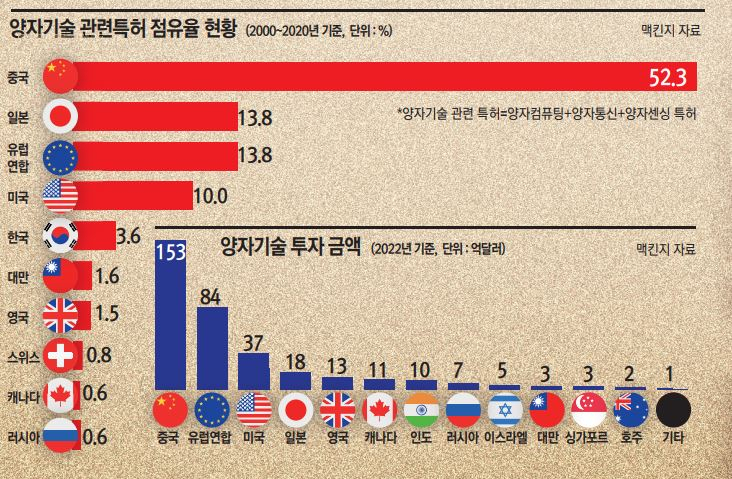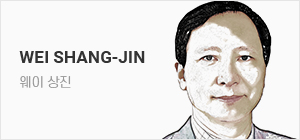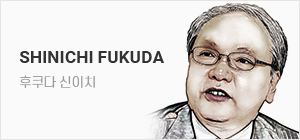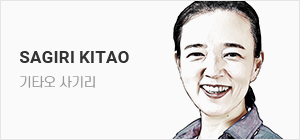이 기사는 해외 석학 기고글 플랫폼 '헤럴드 인사이트 컬렉션'에 게재된 기사입니다.
 |
| 미국의 싱크탱크 기관인 ‘허드슨 연구소(Hudson Institute)’는 강대국의 양자컴퓨터 개발 경쟁을 제2의 핵개발 전쟁 으로 보고 있다. 뉴욕의 한 연구소에서 엔지니어가 양자 컴퓨팅 시스템의 냉각 장치에서 작업하고 있다. [로이터] |

The quantum computing revolution is no longer the stuff of science fiction. It‘s happening now, and is going to change everything from medicine and the study of climate change to the internet, space exploration, and how we envision national security.
Late last year leading articles in the Financial Times and Reuters finally acknowledged what some of us, particularly here at the Quantum Alliance Initiative at Hudson Institute, have been arguing for years: that the nation that enjoys quantum supremacy, will dominate the future of the global system.
Likewise, the nation that fails to protect its data and networks against a future quantum computer attack, is putting its economic and social future at risk.
Today, quantum‘s two most important superpowers, U.S. and China, are locked in a race for quantum supremacy. Fortunately, the United States has some powerful allies, including the Republic of Korea, who can help them prevail in the contest for the future of the planet.
And if you thought AI was going to change everything about how you live and think about the future, just wait until AI and quantum computers start communicating with each other. That Brave New World is coming, ready or not: and being ready has to be a top priority for countries, companies, and individuals, in the next decade.
The power of a quantum computer rests on the physics of quanta of energy, the most basic building block of matter. Quantum computer scientists have devised a way to use the quanta‘s mysterious quality of joining together if only for a fraction of a nanosecond, called entanglement, to process bits of information just as digital computers use bits: except these bits can exist in multiple states at once, thanks to their physics. While a normal digital bit can either be a O or 1, a quantum bit can be a O and 1 at the same time, or a 1 and a O, or 1 or a O standing alone: four different states in one qubit.
That means boosting the computing power of a quantum-based system in exponential ways. For example, we know a 60-qubit quantum computer can do computations faster than the fastest supercomputer. When we get to 300 entangled bits, it will offer as many different states for doing a single computation as there are atoms in the universe. It will be like reading all the books in the American Library of Congress all at once, instead of one at a time.
That kind of computing power will not only bring breakthroughs in solving complex math problems, and deep modeling for risk analysis. It will also allow codebreakers to factorize the large prime numbers that underlie all our public encryption systems, from banks and credit cards to major corporate and government agencies who rely on encryption to protect their data and networks. Even blockchain, with its supposedly invulnerable Distributing Ledger Technology, won‘t be safe from the quantum hacker. Instead, using Shor’s algorithm developed by quantum physicist Peter Shor in the 1990‘s, a quantum hacker can decrypt these systems not just one at a time but all virtually at once.
The impact will be devastating. All encryption, public and private (by using a similar algorithm known as Grove‘s algorithm), will be swept aside, without warning or leaving a trace.
A landmark study we did at the Quantum Alliance Initiative here at the Hudson Institute, demonstrated that a single attack on the Federal Reserve‘s system for wiring inter-bank transactions could cause a drop of 10 to 17 percent in annual real GDP, and cost between $2 and $3.3 trillion in indirect losses. A similar QAI study done on a quantum computer hack of the U.S. power grid, would mean months of disruption and shutdowns, and years of economic chaos.
When we first drew attention to this threat five years ago and created the Quantum Alliance Initiative, even quantum experts assumed the threat of “Q-Day” i.e. the day when quantum computers make current encryption methods useless, lay years, even decades, away. This is because of the difficulty of combining enough of the elusive qubits long enough, to generate the desired calculations. While leading quantum computing companies like IBM are working to pass the 1000 qubit threshold, a code-breaking version would theoretically require tens of thousands, even millions of qubits.
But that complacency about the future threat of quantum computers is fading fast. That‘s thanks to hybrid solutions to the problem, which bring together classical and quantum computing components into one system. As one of our most recent studies shows, the advent of hybrid systems will speed up the timeline for the quantum computer by a decade or more. Hybrid ystems have already been able to break RSA: we know Chinese quantum scientists are working on the next phase, when more complex encryptions can be deciphered. The US only belatedly awakening to the threat; and the new timetable it offers.
In 2022, after repeated warnings and studies like ours, the White House took steps to require a timetable to quantum readiness, a part of its Zero Trust Cyber Initiative. Now we wonder if the timetable it set for government agencies, i.e. 2027. will be soon enough.
One expert, Tilo Kunz, has even said that “Q-day” may come as early as 2025. If that still seems unlikely, being quantum ready by 2025, is not.
That‘s because if large-scale quantum computers, and the threat they pose, are still a long way off, the solutions are already at hand.
One is what‘s called (somewhat misleadingly) post-quantum cryptography, or cryptographic algorithms large and complex enough to resist future quantum intrusion. Scientists at the National Institute of Standards and Technology (NIST) have working on these since 2016, and the three finalists were announced last year. There already exist a number of commercial products that adhere to the NIST standards, which will protect not only against future quantum hackers but conventional hackers today.
Still, the effectiveness of PQC is only theoretical, since there are no large-scale quantum computers to test them against. NIST was embarrassed when one of its early finalists was hacked―not by a supercomputer but a hacker using a laptop.
The other option is quantum-based. It uses entanglement to create hack-proof communications, with randomly generated keys or QKD, or photon-based quantum links, which create the same hack-proof result. China has been working on this approach since mid 2000‘s, including a quantum communication satellite launched in 2016, and another in 2022. US is only slowly and belatedly coming to realize the potential of quantum-based or entanglement-based encryption, while in Europe it is already used for corporate clients, and some government institutions.
But no one has taken a better lead in using QKD to protect data and networks than the Republic of Korea. SK Telecom has used QKD to create its hack-proof communication network in the capital of Seoul, while plans are underway to create a Korean QKD network infrastructure will secure the communication network of 48 government organizations across Korea.
As with quantum computers, the optimal security solution will be a hybrid version, that combines PQC with quantum-based solutions. SK Telecom is already moving in that direction, by setting the global standard for integration of the two technologies. Some U.S. companies, like QuSecure, have been implementing the same blending of PQC and QC.
Like the hybrid quantum computer, the hybrid quantum security package represents the future of quantum technology. It also means the Quantum Age is going to be upon us, a lot faster than anyone expected.
So what‘s next for quantum?
First is the move into space. The hackproof of quantum-based cryptography works best where there‘s no atmosphere to interfere with its point-to-point communications, which makes space the perfect test bed for the future of quantum. China proved that with its first quantum satellite launched in 2016. The European Union is launching its own version of the quantum satellite, while a Singapore-based consortium and UK-Canada consortium are doing the same thing. The United States so far has no plans for putting quantum in space, although NASA was included as one of the agencies to start developing quantum technology in the latest reauthorization of National Quantum Initiative―the first major federal effort to invest in the research and development of quantum technology.
China, by contrast, has been pouring almost five times more government money into funding for quantum research, $15.3 billion compared to $3.7 billion in the U.S. In addition, Beijing has been mobilizing its biggest private companies like Ali Baba behind the national effort. Until now, the US government has relied on Big Tech companies like Google and IBM and Microsoft, to take the lead in quantum technology. That may have to change as China‘s strategy is becoming clearer and clearer: to harden its data and cyber networks using quantum-based systems, while investing heavily in codebreaking quantum computers, including hybrid systems.
Part of the answer may come through teaming up with allies like the Republic of Korea and Japan, who are more advanced in quantum cryptography research and applications that represent the future of quantum communications: even a future quantum Internet.
But even those changes will pale compared to the transformations when AI and quantum join forces.
Quantum computers will be able to deepen and make more precise the data analysis that comes out of AI applications, from designing new drugs to advanced climate change modeling. Artificial intelligence, on the other side, can speed up solutions to the problems of how eliminate “noise” (i.e. false readings generated by the fluctuations of unentangled qubits) from existing quantum computers, and create better designs for future ones.
This will be the dawn of a new world, a true post-digital age with not only a quantum Internet but Quantum Cities springing up around the globe―even in space. The only question is, will this post-digital Quantum Age be dominated by China or by the U.S. and its allies like Korea, Japan, and the other Five Eyes―all of whom are major centers of innovative quantum research.
All will have important parts to play in a Quantum Arsenal of Democracies to safeguard the future. Indeed, the future of the world‘s economies, even freedom itself, may hang in the balance.
Arthur Herman is Senior Fellow at the Hudson Institute and Director of its Quantum Alliance Initiative. He is also the author of Freedom‘s Forge: How American Business Produced Victory in World War II.

AI시대, 부상하는 ‘양자 민주주의 무기고’
양자컴퓨터 혁명은 더 이상 공상과학소설에 나오는 이야기가 아니다. 양자 혁명은 지금 일어나고 있으며, 의학과 기후변화 연구부터 인터넷, 우주 탐사 및 우리가 국가 안보를 구상하는 방식에 이르기까지 모든 것을 변화시킬 것이다.
작년 말 주요 미디어들은 마침내 일부 사람들, 특히 필자가 속한 허드슨 연구소의 퀀텀 얼라이언스 이니셔티브(QAI)가 수년 동안 주장해 온 내용을 인정했다. 바로 양자 우위(quantum supremacy)를 잡는 국가가 글로벌 시스템의 미래를 지배하게 될 것이라는 사실이다.
이와 동일한 논리로 미래의 양자컴퓨터 공격으로부터 자국의 데이터와 네트워크를 보호하지 못하는 국가는 경제적, 사회적 위험에 처하게 될 것이다.
오늘날 양자 분야의 가장 중요한 두 초강대국인 미국과 중국은 양자 우위를 두고 경합을 벌이고 있다. 다행히도 미국은 한국을 포함해 지구의 미래를 위한 경쟁에서 미국이 승리하도록 도울 수 있는 강력한 동맹국들이 있다. 만약 인공지능(AI)이 우리가 살아가는 방식과 미래에 대해 생각하는 방식을 완전히 바꿔놓을 것이라고 생각했다면, AI와 양자컴퓨터가 서로 통신하기 시작하면 과연 어떻게 될까. 준비가 되었든 아니든 멋진 신세계는 이미 다가오고 있고, 이에 대한 준비를 갖추는 것은 향후 10년 간 국가, 기업 및 개인의 최우선 과제가 되어야 할 것이다.
양자컴퓨터의 힘은 물질의 가장 기본적인 구성 요소인 에너지 양자의 물리적 특성에서 나온다. 양자컴퓨터 과학자들은 얽힘(entanglement)이라고 불리는 양자가(나노초보다도 더 짧은 순간만이라도) 결합하는 신비한 특성을 활용해 정보 비트를 처리하는 방법을 고안해냈다. 이는 디지털 컴퓨터가 비트를 사용해 정보를 처리하는 것과 비슷하지만, 양자의 물리적 특성 덕분에 큐비트(양자컴퓨터의 정보 단위)는 동시에 여러 상태로 존재할 수 있다는 차이가 있다. 일반 디지털 비트는 0 또는 1이어야 하지만, 큐비트는 동시에 0이면서 1일 수도 있고, 1이면서 0일 수도 있고, 또는 그냥 1이거나 0일 수도 있다. 즉, 하나의 큐비트에 네 가지 다른 상태가 존재하는 것이다.
이 특성은 양자 기반 시스템의 연산력을 기하급수적으로 증가시킨다. 예를 들어, 60큐비트 양자컴퓨터는 가장 빠른 슈퍼컴퓨터보다 연산을 더 빨리 처리한다. 그런데 60개가 아니라 300개의 비트가 얽힌 300큐비트 양자컴퓨터가 나온다면, 단일 연산을 처리하는 데 우주에 있는 원자 수만큼 다양한 상태가 존재하게 될 것이다. 이는 마치 미국 의회 도서관에 있는 모든 책을 한 번에 하나씩 읽는 것이 아니라 한꺼번에 다 읽을 수 있는 것과 같다.
이런 수준의 연산력은 복잡한 수학 문제를 풀고 위험 분석을 위한 심층 모델을 구축하는 데도 획기적인 발전을 가져오겠지만, 한편으로는 암호해독가들이 은행과 신용카드 회사 및 데이터와 네트워크를 보호하기 위해 암호화 기술을 사용하는 주요 기업과 정부 기관이 사용하는 모든 공개키 암호화 시스템의 근간이 되는 거대 소수들을 인수분해하는 것이 가능해진다. 심지어 무적이라는 분산원장기술을 사용하는 블록체인조차 양자 해커(퀀텀 해커)로부터는 안전하지 않다. 양자 해커는 양자 물리학자인 피터 쇼어(Peter Shor)가 1990년대에 개발한 쇼어 알고리즘을 사용해 한 번에 하나씩이 아니라 거의 동시에 모든 시스템의 암호를 해독할 수 있다.
그 파장은 엄청날 것이다. 모든 공개키 및 개인키 암호화 기술은 (그로버 알고리즘으로 알려진 유사한 알고리즘을 통해) 경고나 흔적도 없이 밀려 사라지게 될 것이다.
 |
| 2021년 6월 7일에 공개된 2021년 4월 유인물 사진. 미국 콜로라도주 볼더에 있 는 하니웰의 양자 컴퓨터 기계의 일부인 진공 챔버 플랜지가 보인다. [로이터] |
필자가 있는 허드슨 연구소의 QAI에서는 수행한 획기적인 연구를 통해 미 연준의 은행 간 송금 시스템에 이런 공격이 단 한 차례만 있어도 연간 실질 GDP가 10~17% 감소하고 2조~3조3000억 달러에 이르는 간접 손실이 발생할 수 있다는 사실을 입증했다. 또 다른 QAI 연구에 따르면, 미국 전력망에 양자컴퓨터 해킹이 발생하면 전력망은 수 개월 동안 중단 또는 정지되고 수 년 간의 경제적 혼란이 발생할 수 있다.
5년 전 연구소가 처음 이 위협에 주목하며 QAI를 설립했을 때, 심지어 양자 전문가들조차 “큐데이(Q-Day)”의 위협 즉, 양자컴퓨터가 현재의 암호화 기법을 무용하게 만들 날은 몇 년 또는 몇십 년 후에나 올 것이라고 말했다. 이는 붙잡기 힘든 큐비트들을 원하는 연산이 가능할 만큼 충분히 길게 결합하는 것이 어렵기 때문이다. IBM과 같은 선도적인 양자컴퓨터 기업들은 1000큐비트 문턱을 넘기 위해 노력하고 있지만, 암호 해독이 가능하기 위해서는 이론적으로 수만 또는 수백만 큐비트가 필요하다.
그러나 이렇게 양자컴퓨터의 미래 위협에 대해 안이하던 태도는 빠르게 변하고 있다. 전통적인 컴퓨터의 구성요소와 양자컴퓨터의 구성요소를 하나의 시스템으로 통합하는 하이브리드 솔루션이 등장했기 때문이다. 우리가 가장 최근에 진행했던 연구 중 하나에 따르면, 하이브리드 시스템은 양자컴퓨터의 일정표를 10년 이상 앞당길 것이다. 하이브리드 시스템은 이미 공개키암호(RSA)를 뚫었고, 중국의 양자 과학자들은 더 복잡한 암호를 해독할 수 있는 다음 단계를 연구 중이다. 이제 미국도 뒤늦게야 위협을 깨달았고, 새로운 일정표가 제시됐다.
반복적인 경고와 연구 끝에 2022년 백악관은 제로 트러스트 사이버 이니셔티브(Zero Trust Cyber Initiative)의 일환으로 양자 준비태세(quantum readiness)를 갖추기 위한 일정을 세우도록 요구하는 조치를 취했다. 이제 우리는 정부 기관에 대해 2027년으로 설정된 이 일정이 충분히 이른지 생각해봐야 한다. 양자 보안 전문가 틸로 쿤츠(Tilo Kunz)는 “Q-day”가 이르면 2025년에 올 수도 있다고 말했다. 현재로서는 그럴 가능성은 낮아보이지만, 2025년까지 양자 준비태세를 갖추는 것은 충분히 가능하다. 대규모 양자컴퓨터와 그에 따른 위협은 아직 멀었지만 해결책은 이미 존재하기 때문이다.
그 중 하나는 양자내성암호(PQC)라고 불리는 미래 양자 해킹을 이겨낼 수 있을 만큼 크고 복잡한 암호화 알고리즘이다. 미국 국립표준기술연구소(NIST)의 과학자들은 2016년부터 이 연구를 진행해 왔으며, 작년 3개의 최종 후보 기술을 발표했다. NIST 표준을 준수하는 상용 제품은 이미 많이 존재하고, 이 제품들은 양자 해커뿐 아니라 오늘날의 기존 해커로부터도 보호를 제공해줄 것이다.

하지만 아직 PQC를 테스트해 볼 대규모 양자컴퓨터가 없기 때문에 PQC의 효과는 이론에 불과하다. 실제로 NIST의 최종 후보 중 하나가 슈퍼컴퓨터도 아닌 노트북을 사용하는 해커에게 해킹을 당했고, NIST는 당황해 했다.
다른 옵션은 양자에 기반한 기술이다. QKD라 불리는 무작위로 생성된 키를 사용해 양자 얽힘을 기반으로 해킹이 불가능한 통신을 생성하거나 동일한 해킹 방지 효과를 창출하는 광자 기반 양자 링크를 사용한다. 중국은 2000년대 중반부터 이 접근방식을 연구해오며 2016년과 2022년에 양자통신 위성을 발사했다. 미국은 양자 기반 또는 얽힘 기반 암호화 기술의 잠재력에 대해 천천히 그리고 뒤늦게 깨닫고 있는 반면, 유럽에서는 이미 기업과 일부 정부 기관에서 이 기술을 사용 중이다.
그러나 QKD를 사용해 데이터와 네트워크를 보호하는 기법을 선도하는 것은 대한민국이다. SK템레콤은 QKD를 사용해 서울에 해킹이 불가능한 통신망을 구축했고, 한국형 QKD 네트워크 인프라를 구축해 전국 48개 정부 기관의 통신망을 보호할 예정이다.
최적의 보안 솔루션도 양자컴퓨터와 마찬가지로 PQC와 양자 기반 솔루션을 결합한 하이브리드 버전이 될 것으로 보인다. SK텔레콤은 이 두 기술의 통합을 위한 글로벌 표준을 설정하며 이미 이 방향으로 움직이고 있다. 큐시큐어(QuSecure)와 같은 일부 미국 기업들도 PQC와 QC의 동일한 조합을 구현해오고 있다. 하이브리드 양자컴퓨터와 함께 하이브리드 양자 보안 패키지도 양자 기술의 미래를 대변하며, 양자 시대가 누구도 예상치 못한 빠른 속도로 우리에게 다가오고 있음을 시사해주고 있다.
 |
| 1943년 버지니아주 알링턴에서 근무하는 미 육군 신호정보국 암호학자들 [미 육군 기록보관소 자료] |
그렇다면 양자 기술의 다음 단계는 무엇일까?
첫 번째는 우주로의 이동이다. 양자 기반 암호화 기술의 해킹 방지 능력은 점대점(point-to-point) 통신을 방해하는 대기가 없어야 가장 효과적으로 작동하기 때문에 양자의 미래를 테스트해볼 수 있는 최적의 장소는 우주다. 중국은 2016년 첫 양자 위성을 발사하며 이를 입증했다. 유럽연합도 자체 양자 위성을 발사할 계획이며, 싱가포르에 본사를 둔 컨소시엄과 영국-캐나다 컨소시엄도 동일한 프로젝트를 추진 중이다. 미국은 아직 양자 위성 발사에 대한 구체적 계획은 없지만, 최근 양자 기술 연구개발에 투자하는 최초의 주요 연방 차원 프로젝트인 국가 양자 이니셔티브(National Quantum Initiative)를 재승인하는 과정에서 양자 기술 개발을 시작할 기관 중 하나로 나사(NASA)가 포함됐다.
이와 대조적으로 중국은 양자 연구에 미국 예산(37억 달러)의 약 5배인 153억 달러의 정부 자금을 쏟아붓고 있다. 또한, 중국 정부는 이 국가적 노력에 알리바바와 같은 큰 민간 기업까지 동원하고 있다. 지금까지 미국 정부는 양자 기술 분야의 주도권을 잡기 위해 구글, IBM, 마이크로소프트 등 빅테크 기업에 의존해왔다. 그러나 중국의 전략이 점점 명확해짐에 따라, 미국도 태도를 바꿔 양자 기반 시스템을 통해 데이터와 사이버 네트워크를 강화하는 한편, 하이브리드 시스템을 포함한 암호 해독 양자컴퓨터에 막대한 투자를 해야 할 수도 있다.
해결책 중 일부는 한국과 일본 등 양자 통신의 미래 또는 미래의 양자 인터넷을 대변하는 양자 암호화 연구 및 응용 분야에서 미국보다 앞서있는 동맹국과의 협력을 통해 도출될 수도 있다. 그러나 이런 변화들은 AI와 양자가 만났을 때 나타날 변화에 비하면 미미한 수준이다.
양자컴퓨터는 신약 개발에서 첨단 기후변화 모델링에 이르기까지 AI 애플리케이션이 더욱 심도 있고 정밀한 데이터 분석을 수행할 수 있게 해주고, 반면에 AI는 기존 양자컴퓨터에서 “노이즈(얽히지 않은 큐비트의 요동으로 생성되는 잘못된 판독값)”를 제거하고 더 개선된 양자컴퓨터를 설계할 수 있는 해결책을 찾는 과정을 가속화시켜 줄 수 있다.
이것은 새로운 세계, 양자 인터넷뿐 아니라 양자 도시가 전 세계, 심지어 우주에 생겨나는 진정한 포스트 디지털 시대의 시작이 될 것이다. 여기서 유일한 의문점은 이 포스트 디지털 양자 시대에 대한 지배권을 중국이 쥐게 될 것인지 아니면 미국을 위시한 한국, 일본 및 파이브 아이즈(Five Eyes)와 같은 미국의 동맹국들이 쥐게 될 것인지다.
미래를 보호하기 위해서는 우리 모두가 “민주주의의 양자 무기고”에서 중요한 역할을 해야 할 것이다. 실제로 세계의 경제, 심지어 자유 그 자체까지 위태로워질 수 있기 때문이다.

bonsang@heraldcorp.com















